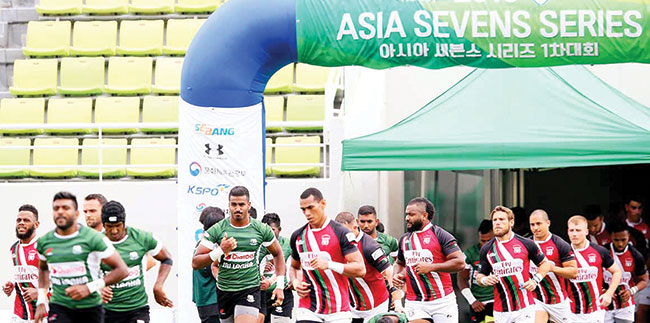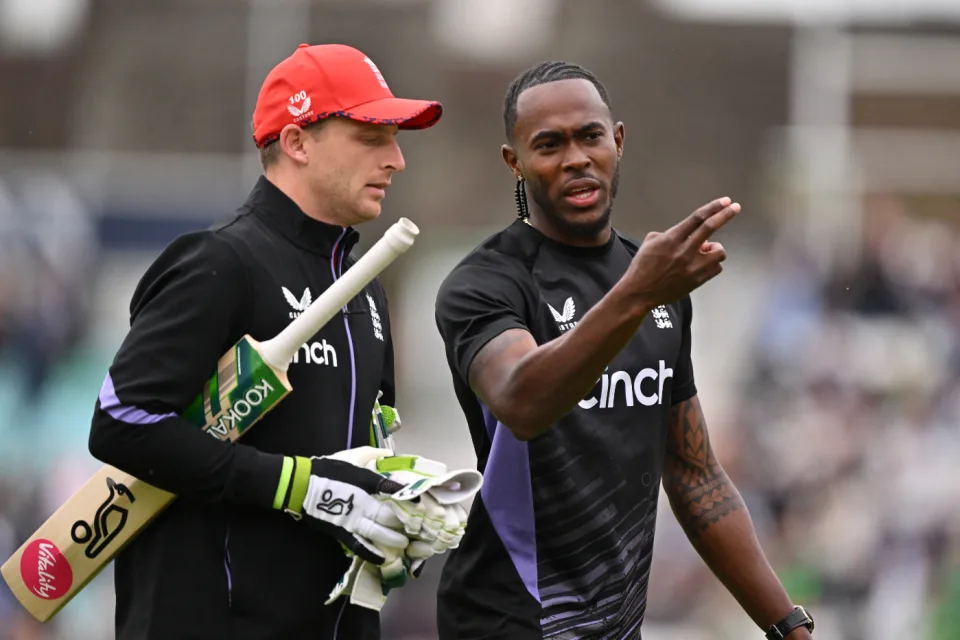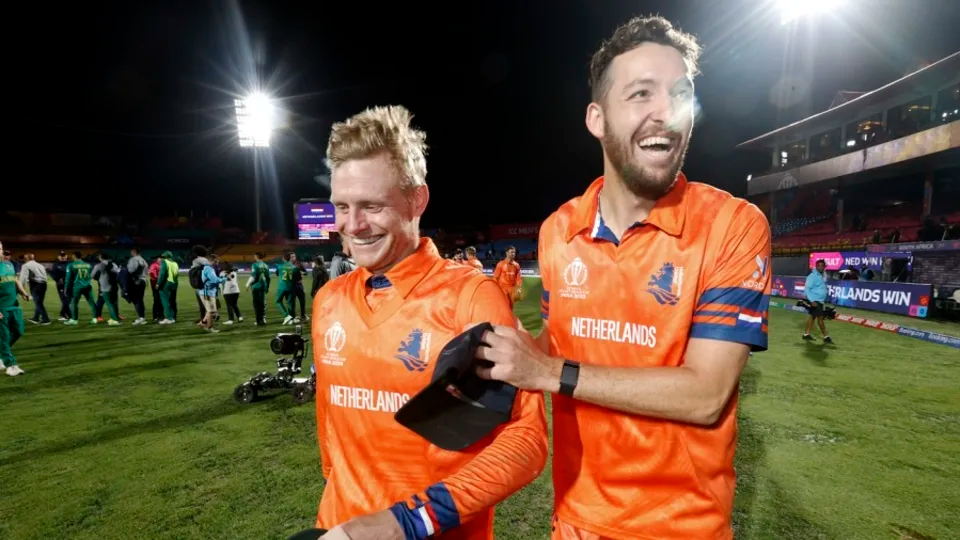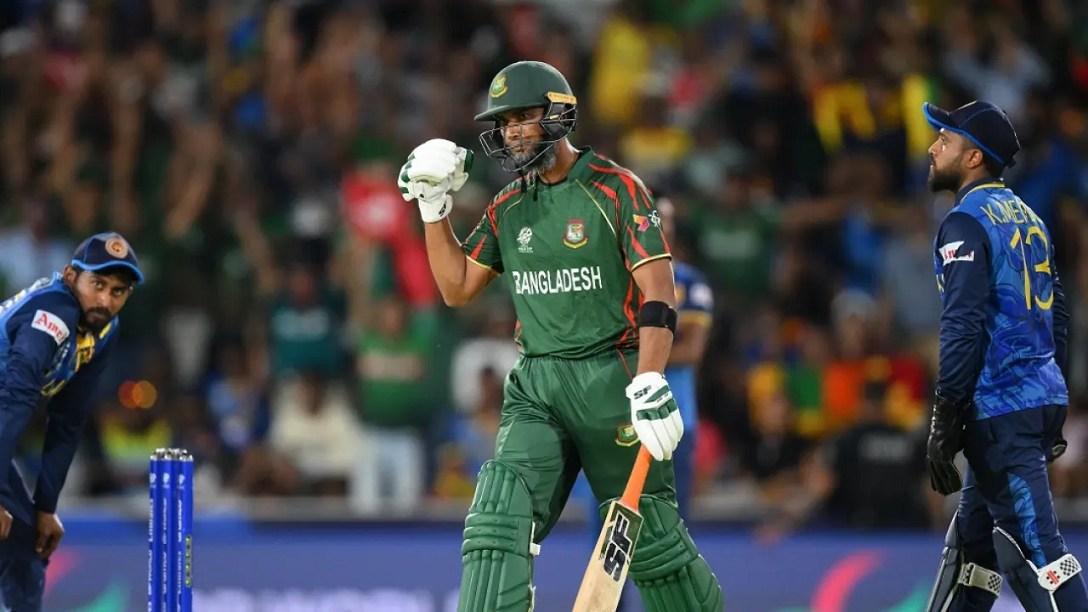Sports
Sri Lanka’s players can draw inspiration from their rugby sevens history

Asian Sevens Series
By A Special Sports Correspondent
Sri Lanka’s men’s players would have to find inspiration from their past glories as they step into contest the first leg of the Asian Sevens Rugby circuit in Dubai (On November 19 and 20) sans much training.
As much as the islanders are proud of their achievements in cricket the same can be said about the country’s rugby players.
History has great power to motivate and its memories can fuel the human spirit when the chips are down. Rugby training in Sri Lanka was hampered to a great extent because of health regulations delaying the players from getting on to the field and having real sessions. What could be described as a burst of rain during the rugby drought in the island came in the form of the arrival of rugby sevens star Ben Gollings as Sri Lanka’s Rugby Sevens Director.
Sri Lanka’s rugby hierarchy has acknowledged the fact that the islanders will be represented by a new-look side where as many as four players are set to make their national sevens debut. These players are Nuwan Perera, Samuel Ogbebor, Kushan Indunil and Ishara Madushan. The Sri Lanka men’s team is led by Adeesha Weratunga who is a reputed third row forward in 15-a-side rugby in the country. Sri Lanka is pooled alongside Japan, China, and UAE in Group B. Sri Lanka is coached by Nilfer Ibrahim.
In a way, it is good that Sri Lanka has to field a young side because the cream of the country’s players from Kandy SC are unavailable because they didn’t participate in a selection trial; participation at the recent ‘Warriors Cup’ invitation club rugby sevens was mandatory for selections.
In the past there were under 21 and under 24 tournaments conducted by the SLR to keep the players in the game; hence there being a well-groomed youth line-up that could chip in if the need arose.
Our very own beast of a man Radeeka Hettiarachchi was spotted by the national selectors at an under 21 rugby game between Sri Lanka and China in Colombo and played in the late 1990s. A little-known fact is that Chinese officials were much impressed by Hettiarachchi’s performance that day and invited him to take wing to China and be part of their rugby team. Hettiarachchi hadn’t represented the senior Sri Lanka team by then and IRB rules allow a player to crossover from one nation to another if he or she has only played age-group rugby for the country of birth. This story was related to this writer by Hettiarachchi himself at a time when happenings in the sport of rugby were rocking his boat. This was largely because he was having issues with the club that he loved most to represent. For the record, he turned down the offer from China because his heart was with Sri Lanka rugby. Hettiarachchi was perhaps the best utility sevens player we have seen and we do have fond memories of those two ‘cracker’ tries he scored against Australia at the Hong Kong Sevens in 2009 where the islanders went down fighting to the Wallabies 56-12.
Some of Sri Lanka’s best performances in the sevens rugby came between 2001 and 2014 and that was thanks to the island concentrating on the abbreviated form of rugby in tournaments played overseas. And a point to ponder is that these performances were produced under homegrown coaches like Asanga Senewiratne, Hisham Abdeen, and Sudath Sampath. Sri Lanka produced one of its best performances in rugby sevens under coach Senewiratne when he guided the team to a memorable 24-14 win over Kenya at the Dubai Sevens. Sri Lanka also produced its only try against the All Blacks in any form of the game in that tournament when Sanjeewa Jayasinghe scored in a game where New Zealand walked away as winners with a 77-5 score.
One notable performance by Sri Lanka came at the 2006 Hong Kong Sevens where the islanders ran out as the winners with a score of 21-7 against the USA. The Commonwealth Games in 2014 was remarkable for Fazil Marija’s team when it beat Trinidad and Tobago 43-7 to win the Shield Competition. That’s a little bit from Sri Lanka’s rugby sevens history in the case readers are a bit jaded reading and rereading about two very old performances at rugby sevens which came in the form of winning the Bowl Competition at both the 1984 Hong Kong Sevens and the 1994 Fiji Invitation Sevens.
Sri Lanka has always performed well when the sevens set-up is structured, but not necessarily under a foreign coach though. Sri Lanka needs time and space (International events must not clash with domestic tournaments because the clubs own the players and not the SLR). We also remember small inputs made to the side when managers like Chaminda Rupasinghe organised sessions for the team overseas before the Sevens Tournament with coaches like Gordon Tietjens and his players.
So Sri Lanka’s present national players have a rich rugby history to draw inspiration from. The players must take note that rugby as a sport has evolved but the foundation for the sport was laid by past players who had half the support and technology the present athletes are enjoying.
Some years ago there was no Asian Sevens series and Sri Lanka when invited had to lock horns with the giants of world rugby. At present Sri Lanka can play with pride, respect and hope because the Asian Sevens Series offers them a level playing field and a chance to qualify for the IRB 11-leg World Sevens Series.
The sport of rugby sevens is also a discipline at the Olympic Games and that too offers great inspiration for the players to train hard, perform well, and be counted. Sri Lanka is also planning to send a women’s team for the Asian Sevens Series in Dubai.
The men’s squad:
Adeesha Weeratunga (Captain), Kanchana Ramanayake, Nishon Perera, Sachith Silva, Iroshan Silva, Sudaraka Dikkubura, Janidu Dilshan, Samuel Ogbebor, Kushan Indunil, Anjula Hettiarahchi, Ishara Madshan, Nuwan Perera.
Sports
England face Australia in the battle of champions

The first truly heavyweight clash of this expanded T20 World Cup format comes freighted with both history and subplots. A rematch of the 2010 World T20 final at Kensington Oval, the match pits Jos Buttler’s defending champions – who are aiming to become the first team to retain the trophy – against the Australian winning machine, victors at the 2021 edition and current world title-holders in Test and ODI cricket. And that’s before you throw in the Ashes for afters.
Already there is added pressure on England, after the rain in Bridgetown led to a share of the points in their opener against Scotland (and that having conceded 90 runs from 10 overs without taking a wicket in a tepid bowling display). Lose to their oldest rivals and it will leave their Super 8 prospects open to being waylaid by the perils of net run-rate calculations, or worse.
The Scotland match was the third abandonment in five suffered by England, after a rain-affected home series against Pakistan, which has clearly hampered their readiness for this campaign after almost six months without playing T20 together. It does not take much for a side to click in this format – and England looked in decent shape when they did get on the field against Pakistan – but Buttler will be anxious for things to go their way on Saturday, if only to avoid further questions referencing the team’s disastrous ODI World Cup defence last year.
Australia, under the laidback leadership of Mitchell Marsh would love nothing more than to add to the English sense of jeopardy – having helped bundle them out of the tournament in India on the way to taking the crown. Their head to head record is less impressive in T20 however, with England having won six of the last seven completed encounters, as well as that 2010 final.
Despite a wobble with the bat, Australia avoided mishap against Oman earlier in the week, the experience of David Warner and Marcus Stoinis shining through in difficult batting conditions. Surfaces in the Caribbean – not to mention those games staged in the USA – have already had teams scratching their heads; rather than the “slug-fest” England had prepared for, following a high-scoring tour of the Caribbean in December, it looks as if boxing smart may be the way to go.
Speaking of Warner, this could be the last time he faces up against England in national colours – and another match-winning contribution would likely reduce the chances of them meeting again in the knockouts. On the other side of the card is Jofra Archer, fresh from an emotional maiden outing at Kensington Oval and ready to take on Australia for the first time in any format since 2020. Can Mark Wood fire up England’s campaign, as he did during last summer’s Ashes? Will Pat Cummins be back to harass the old enemy once again? Seconds out, it’s almost time to rumble.
Cummins is set to return after being rested for the Oman game, which saw Mitchell Starc leave the field with cramp. Starc is understood to be fine and could keep his place – which would likely see Nathan Ellis miss out. Marsh is still not fit to bowl, with Australia likely to continue with the allrounder combination of Stoinis and Maxwell to give them cover.
Australia (probable XI): David Warner, Travis Head, Mitchell Marsh (capt), Glenn Maxwell, Marcus Stoinis, Josh Inglis (wk), Tim David, Pat Cummins, Nathan Ellis/Mitchell Starc, Adam Zampa, Josh Hazlewood
The one change England may consider is Reece Topley coming in for Wood, with the expectation that there will be some rotation among the seamers through the course of the tournament.
England (probable XI): Phil Salt, Jos Buttler (capt & wk), Will Jacks, Jonny Bairstow, Harry Brook, Liam Livingstone, Moeen Ali, Chris Jordan, Jofra Archer, Adil Rashid, Reece Topley/Mark Wood
[Cricinfo]
Sports
South Africa up against their bogey team in batter-unfriendly New York

Once is coincidence, twice is a clue, and three times is proof.
To paraphrase Agatha Christie, that is the narrative around South Africa’s meeting with Netherlands at this T20 World Cup.
The Dutch beat South Africa at the 2022 tournament and ended their semi-final hopes in a match where South Africa appeared to be sleep walking, and then beat them again at the 2023 ODI World Cup, where they exposed South Africa’s vulnerability in the chase. If they to do the treble, not only will Netherlands take the lead in Group D, but they will offer conclusive evidence of the threat they pose to Full Members, especially South Africa.
Of course, it will take some doing after South Africa’s opening performance against Sri Lanka, where they reduced their opposition to their lowest T20I total and chased it down in fairly straightforward fashion thanks to the most stable middle-order of their white-ball era. In Aiden Markram, Tristan Stubbs, Heinrich Klaasen and David Miller, South Africa have bankers and big-hitters and, for this match, they also have the advantage of experience. They’ve already played at Eisenhower Park, and have first-hand knowledge that run-scoring doesn’t come easily;Klassen said they are prepared to use their “cricket brains” and play “smarter cricket”.
But the conditions could be good news for Netherlands, who are not naturally a line-up of big hitters and build their innings on a foundation of turning ones into twos. In other words, they tend to take a slightly more conservative approach to batting, which may work well here, but they’ll be wary of the uneven bounce of the surface and will have to come up with plans to counterattack especially against South Africa’s seamers. Their own bowlers were exemplary in Dallas and will look to build on that performance against a line-up that will likely be more proactive than Nepal’s, but who they have managed to keep quiet not once, but twice in the past. Third time’s the charm, they say.
Anrich Nortje’s stunning return to form against Sri Lanka means South Africa may not have to tinker with the bowling combination, and Gerald Coetzee and Tabraiz Shamsi may have to wait their turns to get a game. The batting line-up should be unchanged, with no space for Ryan Rickelton yet.
South Africa: Quinton de Kock (wk), Reeza Hendricks, Aiden Markam, Tristan Stubbs, Heinrich Klaasen (wk), David Miller, Marco Jansen, Keshav Maharaj, Kagiso Rabada, Ottneil Baartman, Anrich Nortje
Conditions in New York may tempt Netherlands to include an extra seamer and they have Kyle Klein in their squad. But it could come at the expense of a shortened batting line-up and they may not want to risk that.
Netherlands: Michael Levitt, Max O’Dowd, Vikramjit Singh, Sybrand Engelbrecht, Scott Edwards (capt, wk), Bas de Leede, Teja Nidamanuru, Logan van Beek, Tim Pringle, Paul van Meekeren, Vivian Kingma
[Cricinfo]
Latest News
Mustafizur, Rishad, Hridoy dazzle in Bangladesh’s tight two-wicket win over Sri Lanka

Nuwan Thushara’s last over brought Sri Lanka screaming back into the match,as he first bowled Rishad Hossain, and then nailed Taskin Ahmed in front of the stumps with a pinpoint swinging yorker. This left Bangladesh eight wickets down, with 12 runs still to get.
However, the experienced Mahmudullah was at the crease for Bangladesh, and despite some further nervy moments, pushed Bangladesh across the line off the last ball of the 19th over.
But this was a match chiefly decided by Bangladesh’s own outstanding bowling. Mustafizur Rahman was the best among them, using shorter lengths and his cutters efficiently, to claim figures of 3 for 17. Rishad Hossain’s three-for through the middle overs also kept Sri Lanka quiet.
Mustafizur was instrumental in Sri Lanka’s downward spiral through the middle overs, which culminated in a crash-and-burn end. Ultimately, their inability to find boundaries, or even rotate strike against good Bangladesh bowling resulted in their downfall. A score of 125 for 9 always seemed poor on a decent pitch, even if their bowlers made a match of it in the end.
Brief scores:
Bangladesh 125 for 8 in 19 overs (Towhid Hridoy 40, Litton Das 36; Dhanajaya de Silva 1-11, Nuwan Thushara 4-18, Wanidu Hasaranga 2-32, Matheesha Pathirana 1-27) beat Sri Lanka124 for 9 in 20 overs (Pathum Nissanka 47, Dhananjaya de Silva 21; Tanzim Hasan Sakib 1-24, Taskin Ahmed 2-25, Mustafizur Rahman 3-17, Rishad Hossain 3-22) by two wickets
[Cricinfo]












